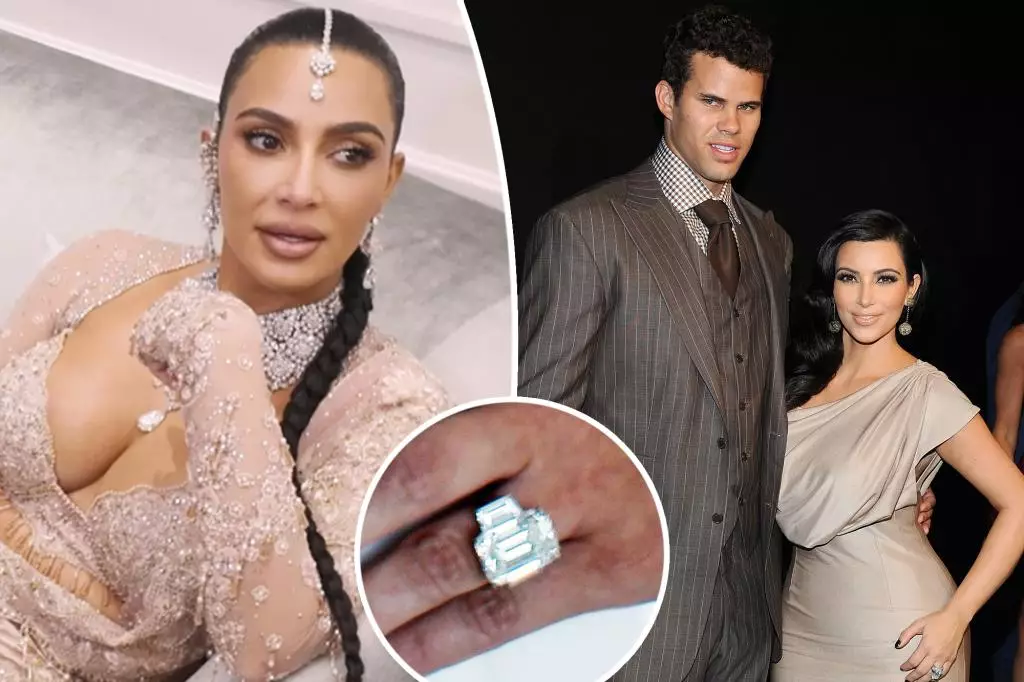In the world of celebrity relationships, few stories stand out like that of Kim Kardashian and Kris Humphries. In a recent episode of “The Kardashians,” Kim reminisced about her past engagements, shedding light on an intriguing aspect of her life: her involvement in purchasing her extravagant engagement rings. What might be perceived as a glamorous love story quickly reveals itself as a nuanced tale of emotion, money, and the complexities of public relationships.
Kim’s narrative points to an important truth about high-profile engagements: engagement rings can represent more than just love—they often highlight the financial dynamics at play in relationships. Kim boldly claimed that she financed the majority of her $2 million engagement ring from Humphries. Despite her investment, the ring ultimately became a point of contention during their divorce, prompting a deeper examination of how material symbols can become burdened with emotional baggage.
An Unearthly Weight of Ownership
The idea that rings can symbolize ownership often manifests itself in the stories of celebrity breakups. In Kim’s case, the engagement ring from Humphries was more than just a diamond— it became a physical representation of a contentious end to their 72-day marriage. Forced to return the ring, despite her financial contribution, raises questions about the inequities often felt in relationships, particularly those that are heavily scrutinized by the public eye.
When reflecting on her engagement history, Kim thoughtfully categorized her rings by shape and weight, blending personal memories with their lavish aesthetics. The cushion cuts and emerald cuts become markers not just of changing tastes but of evolving personal circumstances. The fact that she desires her ring from Kanye West to be passed down to her daughter, North, speaks volumes about a lingering emotional attachment that transcends mere materialism. It stands as a testament to how intertwined love and life can become, even when romance fades.
The Pressure of Perception
Interestingly, Kim disclosed that her decision to marry Humphries was influenced by the reality TV context in which her life unfolded. Feeling the pressure to maintain the facade of a successful marriage for the cameras, she reveals a layer of vulnerability that contrasts sharply with her public persona. The risk of being labeled “the runaway bride” painted her in a corner, forcing her to stay in a marriage that she might have questioned under different circumstances. This situation offers a powerful commentary on how societal expectations can pressure individuals into making life-altering decisions.
Rather than casting blame, Kim’s narrative evokes empathy as she navigates the intersection of personal and public scrutiny. The sparkle of her rings may hint at romance, but the stories intertwined with them offer a rich tapestry of lessons about love, loss, and resilience. Perhaps the real diamond in her experience lies in her ability to learn from her past while still engaging with the allure of the glitzy world she inhabits.
To deem Kim Kardashian’s rings mere possessions would be too simplistic; they reflect life’s intricacies and the emotional depths of human connection, exposing both their grandeur and the poignant reality behind each one.

